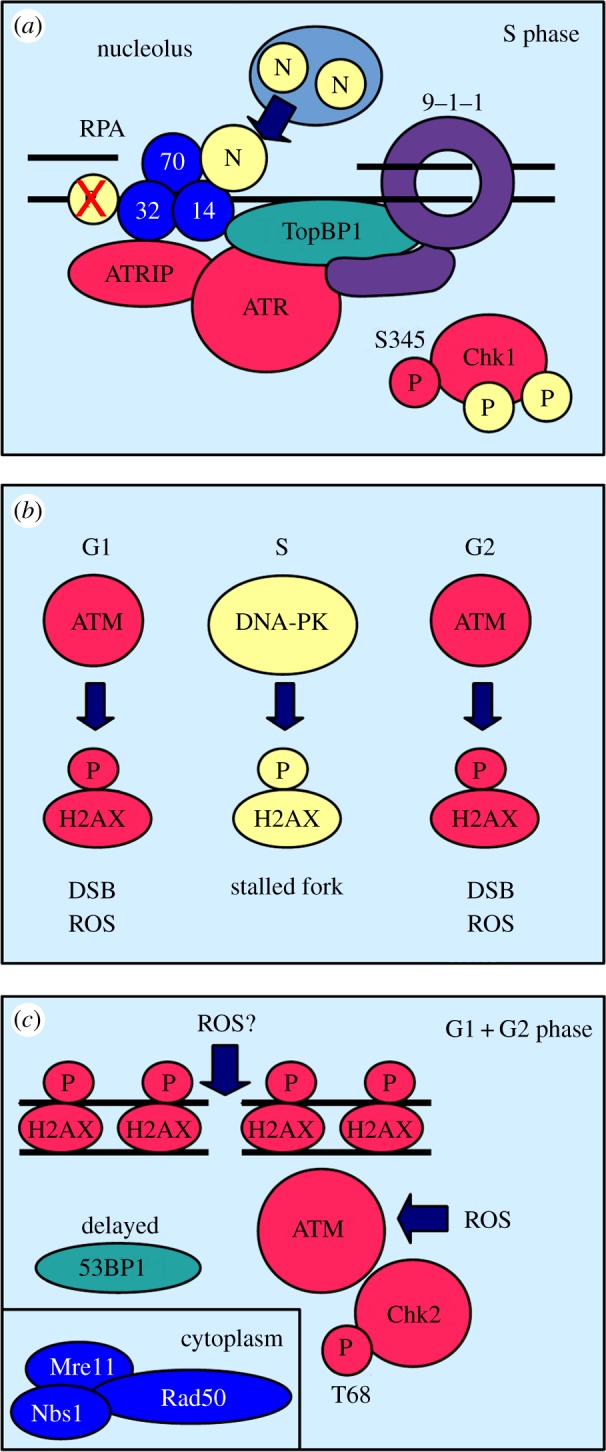Figure 2.

Activation of ATM and ATR at temperatures above 40°C. (a) Activation of ATR. Nucleolin (N) binds to replication protein A (RPA) after its heat-induced release from the nucleolus. This reprograms ATR activation. Despite the presence of the Rad9–Rad1–Hus1 ring (9–1–1) and TopBP1, heat-activated ATR does not modify RPA32. Chk1 is phosphorylated at several sites in addition to serine-345 (S345). (b) Cell cycle specificity of histone H2AX phosphorylation. In G1 and G2, ATM kinase phosphorylates the histone variant H2AX in response to DSBs or high levels of reactive oxygen species (ROS). During S phase, the related kinase DNA-PK modifies H2AX to stabilize stalled replication forks. (c) Activation of ATM. The Mre11–Rad50–Nbs1 complex moves from the nucleus to the cytoplasm (inset) in the response to heat stress. Despite the absence of the MRN complex, ATM kinase is activated in a yet unknown way by heat and phosphorylates Chk2 kinase at threonine-68 (T68). The recruitment of 53BP1 is delayed. Heat, inflammation and increased metabolism increase the levels of ROS which can open the disulfide bond of the inactive ATM dimer thereby activating ATM. DNA double-strand breaks may be a secondary consequence of high ROS levels.
